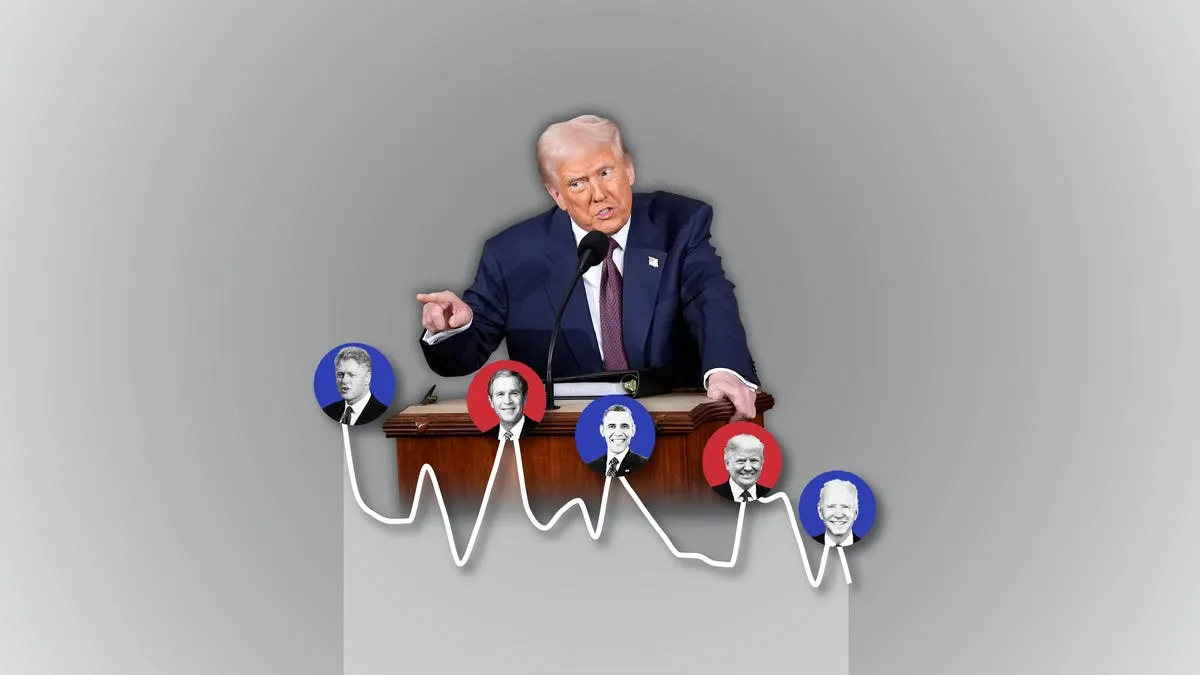
In a significant moment for political history, President Donald Trump delivered a lengthy address to Congress on Tuesday that broke records for both its duration and the number of words spoken. This address, however, sparked interest not only for its content but also for its Nielsen TV ratings, which provide insight into the viewership of televised events. According to Nielsen, Trump's speech attracted an estimated 36.6 million viewers, marking a notable moment in the landscape of presidential addresses.
Despite the impressive figures, Trump's recent address garnered fewer viewers than any of his previous four addresses during his first term. In a comparison of historical data, former President Bill Clinton holds the record for the highest Nielsen rating during a presidential address to Congress, with a staggering 66.9 million viewers in 1993. Since then, the trend in viewership has shown a gradual decline, raising questions about the engagement of the American public with such events.
During Trump's address, viewership peaked at 37,895,000 from 9:45 p.m. to 10 p.m. ET, according to Nielsen's data. Interestingly, Trump's most-watched address occurred in 2017, when he captivated 47.7 million viewers. This highlights how initial engagements can often draw larger audiences, while subsequent addresses tend to see a reduction in viewership.
Diving deeper into the demographics of Trump's audience during the recent address, Nielsen reported that 5.7% of viewers were aged 18-34, while 20.5% fell within the 35-54 age bracket. The largest segment, making up 70.7% of the audience, were viewers aged 55 and older. This age distribution suggests that Trump's messaging resonates more with older audiences, a pattern that is consistent with previous presidential addresses.
Trump's viewership numbers also show an interesting comparison with his predecessor, Joe Biden. The recent address attracted 4.4 million more viewers than Biden's televised event in 2024. However, fewer viewers tuned in for Trump's second swearing-in ceremony on January 20, which recorded an overall audience of 24.6 million viewers. Notably, the peak for this event was 34.4 million during the 12:15 quarter-hour.
When comparing these figures to Biden's inauguration in 2021, which drew 33.8 million viewers, and Trump's first inauguration in 2017, which had 30.6 million viewers, it is clear that the trend in viewership is experiencing fluctuations, reflecting the changing dynamics of American political engagement.
As we analyze these trends, it is evident that while Trump continues to attract significant audiences, the decline in viewership for presidential addresses is a noteworthy development in the realm of American politics.